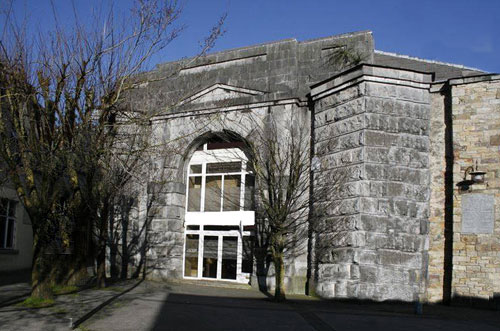
Recently (April 20th 2022) we here at Thurles.Info featured an article entitled “Official Opening Of New “Horses of Hope” Equine Centre At Castlerea Prison”, which is expected to play an important part in the rehabilitation of prisoners, thus preventing same from reoffending on their eventual release. Read article HERE.
History recalls the setting up of a rather similar type of institution here in Co. Tipperary, same first established back in 1906.
Ireland’s first and indeed only Borstal institution, known as St. Patrick’s Borstal Institution was located in the centre of Clonmel, Co. Tipperary, as a place of detention for young male offenders, aged between 16 and 21. Most of whom were detained for offences including larceny, house-breaking, assault, animal theft and a low number of sexual crimes.
This Clonmel borstal institution provided boy inmates with continued support, same affected by the then existing “Borstal Association of Ireland”.
Following on from their release, the aforementioned association provided help and advice in finding employment, with this aftercare proving to be extremely successful, demonstrated by the small numbers of boys relapsing back into crime, following on from their release.
The Clonmel Borstal was first established following the recommendations of the 1895 “Report of the Departmental Committee on Prisons”, latter more generally known as the “Gladstone Committee”.
The institution was modelled on an innovative approach to young-offender reform, then being developed at a similar facility in the town of Borstal near Rochester, Kent, England, then begun in 1901.
This Clonmel, Co. Tipperary institution was designed to be “educational rather than punitive (intended punishment)”, but it was highly regulated, with a focus on routine, discipline and authority during its early years. However, in cases of mutiny or assaulting a prison officer, corporal punishment was officially available in the form of a birch rod, typically applied to the recipient’s bare buttocks, but only with the consent of a magistrate in attendance.
In Clonmel, to establish this borstal it was necessary to acquire all of the old prison grounds, with older or adult prisoners then serving sentences, transferred to other existing prison institutions.
The Prevention of Crime Act 1908 envisaged that youths aged between 16 and 21, who were charged with serious offences could undergo a programme of discipline intended to rehabilitate them, while segregating minors from the influence of adult prisoners.
The average number of inmates at Clonmel Borstal, at any given time, is understood to have been about 50 in number. Only about half of these had been sent directly by a court. The others were transferred by Ministerial order from their ordinary prisons. The regime in Clonmel allowed a level of trust to develop between the staff and detainees. At the discretion of the acting Governor, the boys could be allowed out into the town to seek employment.
The Clonmel borstal was an obvious recruiting ground for the British army. Magistrate Mr Justice Thomas Moloney, while attending the Spring 1919 Court of Assizes in Clonmel, paid tribute to some 424 inmates that he estimated were enlisted to fight. He further claimed that around seventy of these boys had made the “supreme sacrifice”.
In 1922, when the civil war began in Ireland, the institution was commandeered for military purposes and inmate boys were moved to Clogheen workhouse, Co. Tipperary.
By the mid-1950s the numbers of inmates had declined and with fewer coming from Dublin, it was decided to close the facility in Clonmel.
On December 1st 1956, 50 years after its initial foundation, the Irish borstal institution vacated Clonmel for the last time.

Leave a Reply